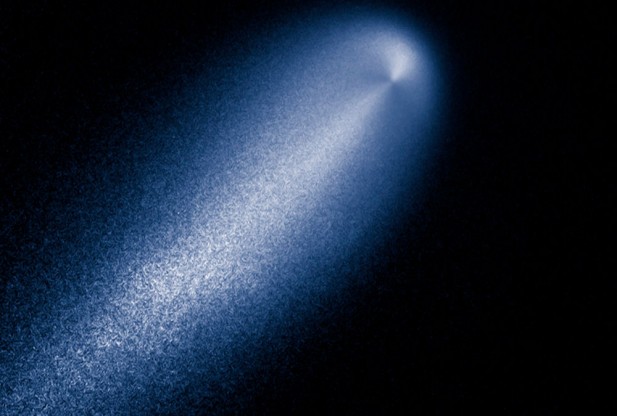
Comet ISON has been closely watched by several astronomers over the past year with great anticipation, but also with a little hesitation. It is a tricky balance, because comets have been notorious for disappointment in the past, particularly when media grabs hold of the subject and helps hype up events like this.
In August, Comet ISON emerged from behind the sun and was first picked up by amateur astronomer Bruce Gary. Reports said that according to Gary's observations, this comet was headed for disappointment, rather than the fall spectacle that news sources hyped it up to be. Since then, not a lot of new information has emerged about the comet from the media outlets, so redOrbit reached out to Karl Battams, an astrophysicist and computational scientist at the US Naval Research Laboratory, to get an update about Comet ISON.
"The 'ISON is fizzling' thing was nonsense from the beginning, and should never have been reported without fact-checking," Battams told redOrbit. "It was an inflammatory press release that partially misquoted and misrepresented an already highly speculative research paper that had not even been peer reviewed."
The original press release announcing the comet had fizzled has since been taken offline, and Karl says the latest news about Comet ISON is all good news.
"So the actual latest is that Comet ISON continues to gradually brighten up, and is behaving almost exactly as we expect a dynamically new comet to behave. It's still in one piece, and is beginning to show an extended coma and increasingly lengthening tail. Bottom line is that it is progressing very nicely!"
Although the comet is still on track to provide a memorable backyard astronomy experience later this year, it still doesn't mean it will be the "Comet of the Century" as some news outlets have also reported.
"We [NASA's Comet ISON Observing Campaign (CIOC)] have NEVER said it will be the comet of the century, and I don't know of any professional cometary scientists that have. That is entirely the media's term, and we've done our best to tone down that message at every opportunity," Battams, who is part of the CIOC, told redOrbit. "But what I will say is this: through our coordinated observing campaign we have assembled one of the broadest and most technologically advanced cometary observing campaigns in history, with an unprecedented armada of spacecraft readying to view the comet (or having viewed it already)."
"When ISON reaches perihelion, it should prove to be a spectacular object in many of our space-based satellites, and should return some wonderful images and movies," Karl added. "On top of this, the science return from such a breadth of observations will be extraordinary, regardless of how the comet 'performs'. Right now, ISON is not showing any signs that it's going to 'fizzle' out, and chances remain decent that we'll see a nice naked-eye comet in December."
Perihelion is the point in the orbit of a comet where it is closest to the sun. Part of the danger with this comet being new is that data is very limited, which means its brush with the sun could also be its demise.
"If it does survive perihelion - odds of which are roughly 50/50 though we're tentatively leaning towards a scenario where it will survive that close brush with the Sun - then it will hopefully be naked-eye visible in early December, and visible in telescopes and binoculars throughout most of December and perhaps into January," Battams told redOrbit.
He said ISON is already visible to good-sized backyard telescopes, and it will become more visible to even the backyard astronomer with smaller tools by mid-to-late October.
"However, it will then begin to get close to the Sun in the sky, and that makes it harder to view against an increasingly bright background sky. Of course, by that time we will have it in the sights of our telescopes on the NASA STEREO satellite, so we will have a space-based view of it 24/7 right through to perihelion and beyond (as long as it survives, of course!)."
Karl did warn that even with the positive news that Comet ISON is still traveling across the Solar System as predicted, you can never rule anything out.
"Of course, comets can and do surprise us, so we can never rule out an unexpected fragmentation or complete disruption of the comet. But right now it seems pretty happy," Battams told redOrbit.
For anyone wanting to find out more about observing the comet, Karl recommends people contact their local astronomy clubs for advice later in October and then throughout December. He also says those interested should check out the NASA Comet ISON Toolkit, the Hubble Space Telescope's Comet ISON blog, and the CIOC website, which contains blog posts, light curves and more.



Reader Comments
to our Newsletter